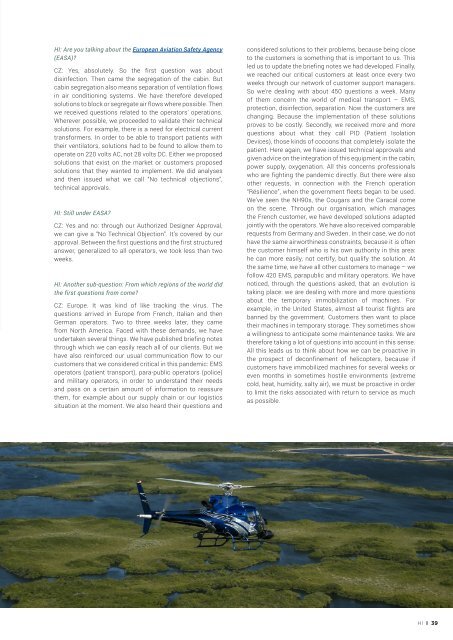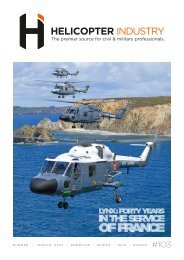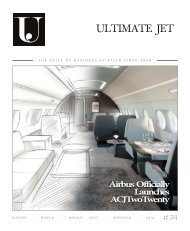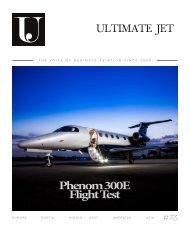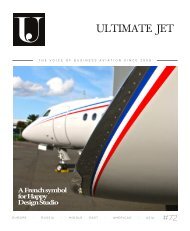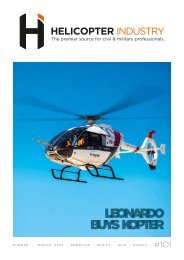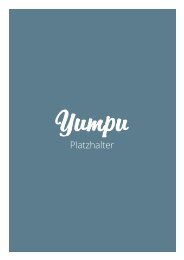Magazine Helicopter Industry #102
You also want an ePaper? Increase the reach of your titles
YUMPU automatically turns print PDFs into web optimized ePapers that Google loves.
HI: Are you talking about the European Aviation Safety Agency<br />
(EASA)?<br />
CZ: Yes, absolutely. So the first question was about<br />
disinfection. Then came the segregation of the cabin. But<br />
cabin segregation also means separation of ventilation flows<br />
in air conditioning systems. We have therefore developed<br />
solutions to block or segregate air flows where possible. Then<br />
we received questions related to the operators’ operations.<br />
Wherever possible, we proceeded to validate their technical<br />
solutions. For example, there is a need for electrical current<br />
transformers. In order to be able to transport patients with<br />
their ventilators, solutions had to be found to allow them to<br />
operate on 220 volts AC, not 28 volts DC. Either we proposed<br />
solutions that exist on the market or customers proposed<br />
solutions that they wanted to implement. We did analyses<br />
and then issued what we call “No technical objections”,<br />
technical approvals.<br />
HI: Still under EASA?<br />
CZ: Yes and no: through our Authorized Designer Approval,<br />
we can give a “No Technical Objection”. It’s covered by our<br />
approval. Between the first questions and the first structured<br />
answer, generalized to all operators, we took less than two<br />
weeks.<br />
HI: Another sub-question: From which regions of the world did<br />
the first questions from come?<br />
CZ: Europe. It was kind of like tracking the virus. The<br />
questions arrived in Europe from French, Italian and then<br />
German operators. Two to three weeks later, they came<br />
from North America. Faced with these demands, we have<br />
undertaken several things. We have published briefing notes<br />
through which we can easily reach all of our clients. But we<br />
have also reinforced our usual communication flow to our<br />
customers that we considered critical in this pandemic: EMS<br />
operators (patient transport), para-public operators (police)<br />
and military operators, in order to understand their needs<br />
and pass on a certain amount of information to reassure<br />
them, for example about our supply chain or our logistics<br />
situation at the moment. We also heard their questions and<br />
considered solutions to their problems, because being close<br />
to the customers is something that is important to us. This<br />
led us to update the briefing notes we had developed. Finally,<br />
we reached our critical customers at least once every two<br />
weeks through our network of customer support managers.<br />
So we’re dealing with about 450 questions a week. Many<br />
of them concern the world of medical transport – EMS,<br />
protection, disinfection, separation. Now the customers are<br />
changing. Because the implementation of these solutions<br />
proves to be costly. Secondly, we received more and more<br />
questions about what they call PID (Patient Isolation<br />
Devices), those kinds of cocoons that completely isolate the<br />
patient. Here again, we have issued technical approvals and<br />
given advice on the integration of this equipment in the cabin,<br />
power supply, oxygenation. All this concerns professionals<br />
who are fighting the pandemic directly. But there were also<br />
other requests, in connection with the French operation<br />
“Résilience”, when the government fleets began to be used.<br />
We’ve seen the NH90s, the Cougars and the Caracal come<br />
on the scene. Through our organisation, which manages<br />
the French customer, we have developed solutions adapted<br />
jointly with the operators. We have also received comparable<br />
requests from Germany and Sweden. In their case, we do not<br />
have the same airworthiness constraints, because it is often<br />
the customer himself who is his own authority in this area:<br />
he can more easily, not certify, but qualify the solution. At<br />
the same time, we have all other customers to manage – we<br />
follow 420 EMS, parapublic and military operators. We have<br />
noticed, through the questions asked, that an evolution is<br />
taking place: we are dealing with more and more questions<br />
about the temporary immobilization of machines. For<br />
example, in the United States, almost all tourist flights are<br />
banned by the government. Customers then want to place<br />
their machines in temporary storage. They sometimes show<br />
a willingness to anticipate some maintenance tasks. We are<br />
therefore taking a lot of questions into account in this sense.<br />
All this leads us to think about how we can be proactive in<br />
the prospect of deconfinement of helicopters, because if<br />
customers have immobilized machines for several weeks or<br />
even months in sometimes hostile environments (extreme<br />
cold, heat, humidity, salty air), we must be proactive in order<br />
to limit the risks associated with return to service as much<br />
as possible.<br />
HI I 39


